I started knitting back in 2007 when I was in my first semester of law school. I was eager to find a healthy way to cope with stress and figured that knitting looked pretty relaxing.
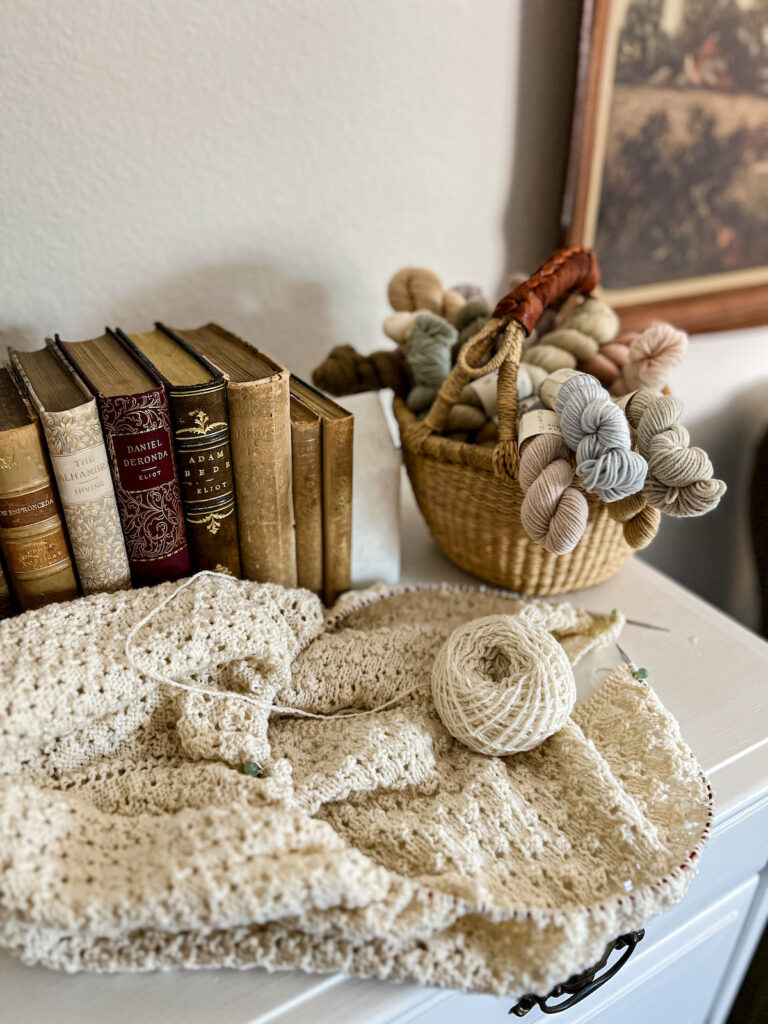
In the nearly 17 years since I first picked up my needles, I’ve been on quite the knitting journey. I no longer practice law, and now I design knitting patterns and create content for knitters who want to improve their skills.
Along the way, I’ve picked up a lot of knitting tips that I wish I’d known earlier. In hopes of saving you some stress and frustration, and giving you a bit of encouragement along with it, here are 11 things I wish I had known back when I was a beginner knitter.
1. Yarn weight and fiber content matter.
I knit my first ever project–a garter stitch scarf, just like so many other new knitters–using Rowan Big Wool on US size 19 needles. The experience was so exciting that I immediately dove into knitting other things.
Mostly more garter stitch scarves using various wool yarns on various needle sizes. As one does.
But once I started knitting other things, I learned that the fiber content and weight of my yarn was really important. Unfortunately, I learned these things the hard way. I once bought a pattern that was meant for fingering-weight linen. I tried to knit it in a DK-weight cotton-acrylic blend. Things did not go well.
Nowadays, I take yarn substitution seriously. You don’t have to use the same yarn the designer used, but you do need to understand how using a different yarn will affect your final project.
2. Blocking solves a lot of problems.
Blocking is the process of exposing your final knit project to moisture, usually via water or steam, and shaping it so it can dry into a specific shape. If it doesn’t get water or steam, it hasn’t been blocked.
The reason it works so well for animal fibers and, to a lesser extent, plant fibers is that these materials have memory. That means if you get them wet and let them dry in a particular shape, they will be more likely to retain that shape and to return to that shape after stretching. Most synthetic fibers are less likely to do that.
It also allows the fibers to bloom, and this is where the magic happens. If your stitches are kind of uneven, which is common for knitters when they’re just starting out, blocking can help hide that unevenness. Blocked knits look smoother and more consistent.
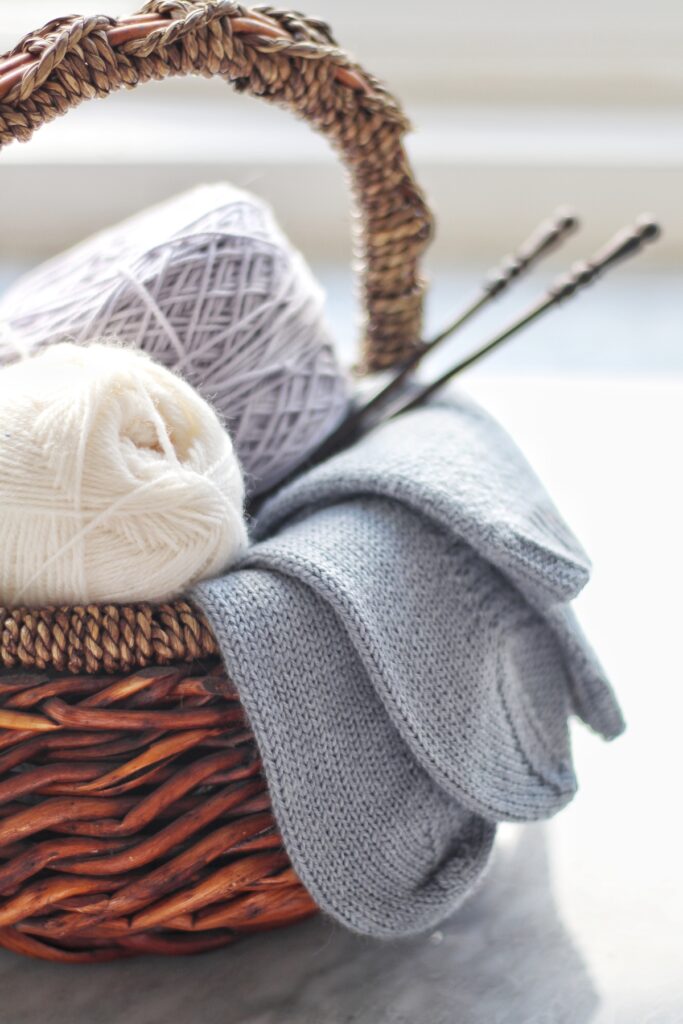
3. Wool isn’t just for winter.
For a long time, I thought wool was a winter-only fiber. It makes sense, really. People talk about cozy wool sweaters, but they never really talk about lightweight wool tshirts.
Then I moved home to Southern California, and I quickly learned I needed to adjust my knitting preferences if I was going to survive and keep knitting here.
Now I love to knit tshirts from lightweight wool yarn. See, wool is sweat-wicking and has antimicrobial properties, which means it’s less likely to get stinky or stay stinky. Lightweight wool is great for summer wear.
4. Not all free patterns are equal.
When you’re just getting started out, it makes sense that you’d try to avoid spending too much money. After all, you’re still trying to figure out your preferred style of knitting and whether you like larger needles or smaller needles.
As a result, it’s common for a beginner knitter to start with free patterns. There’s just one problem: a lot of free patterns are free for a reason.
So how can you tell which free patterns are worth the time? Look for an established designer who offers one or two free patterns as a way to get to know their designs. Because the bulk of their income is from pattern sales, they’ll have gone to the effort to make sure this free pattern is also good so it can attract potential buyers.
You’ll probably also have good luck with designers who are established but publish many free patterns on their blog. These designers usually earn income from ad sales and collaborations with yarn companies, which means their work needs to be good to continue receiving traffic and sponsorship.
Many yarn companies offer free patterns to go with their yarn. These patterns can be hit or miss, so check forums for input.
As for my free patterns? They’re tech edited just like my regular patterns to make sure they’re as error-free as possible.
5. Every knitter’s gauge is unique.
Gauge refers to how many stitches there are per horizontal and vertical inch in your work. The more stitches per inch, the tighter your gauge.
The thing is, two knitters could be using the exact same materials–say, worsted weight yarn on 4 mm straight needles–and yet end up with drastically different gauge. That’s because gauge is affected by your materials and needles, but it’s also affected by the way you hold your yarn, the way you make your stitches, the way you tug your yarn after making a stitch, etc.
So when you start a project from a new-to-you designer, it’s important not to assume your gauge will match theirs. Knit a gauge swatch. Save yourself the grief of spending 30 hours on a garment only for it to be much too big or way too small.
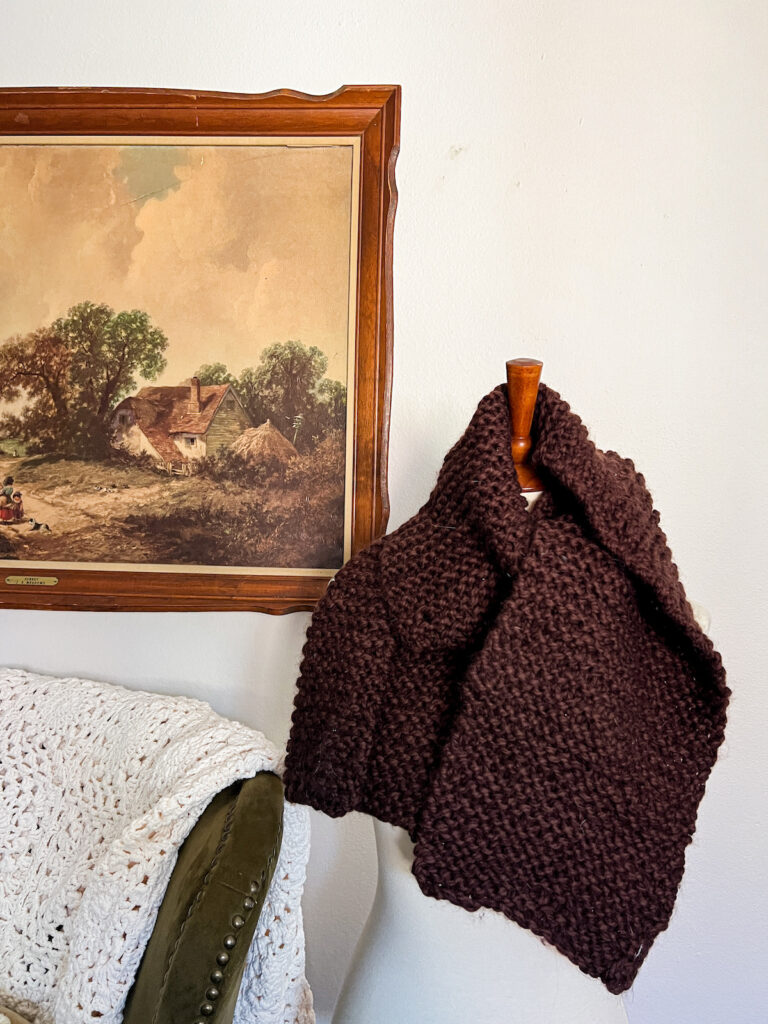
6. Mistakes aren’t the end of the world.
When I was a beginning knitter, I struggled a lot with perfectionism. Over the years, knitting helped me learn that a lot of mistakes really aren’t a big deal. In fact, most people don’t even notice the mistakes that seem really obvious to me.
When the mistakes really do need to be fixed, most of them can be fixed quite easiliy. I learned to fix dropped stitches, rip back a little bit and reknit, undo miscrossed cables, and more.
Through all those mistakes, the most valuable lesson I learned is that even having to completely rip out a project and start over is okay. That’s because time spent knitting is never time wasted. If I have to start again, that just means I get to knit some more.
7. Learning something new with each project will help your skills snowball quickly.
With my very first project, I learned three crucial skills: the knitted cast-on, the knit stitch, and the knitted bind-off. I stuck to those three skills for a few more projects, but eventually, I knew I was ready to learn more.
So I adopted a policy: with each new project, I would learn one new skill. Doing this meant I quickly learned the purl stitch, increases, decreases, cables, basic lace, knitting in the round, and more. If you get stuck on a new technique, you can almost guarantee there will be some YouTube videos that can help explain it to you.
Most of the time, your new projects will also reinforce the skills you learned in earlier projects. This means you’ll keep practicing your existing skills while learning a new one. It’s a skill snowball!
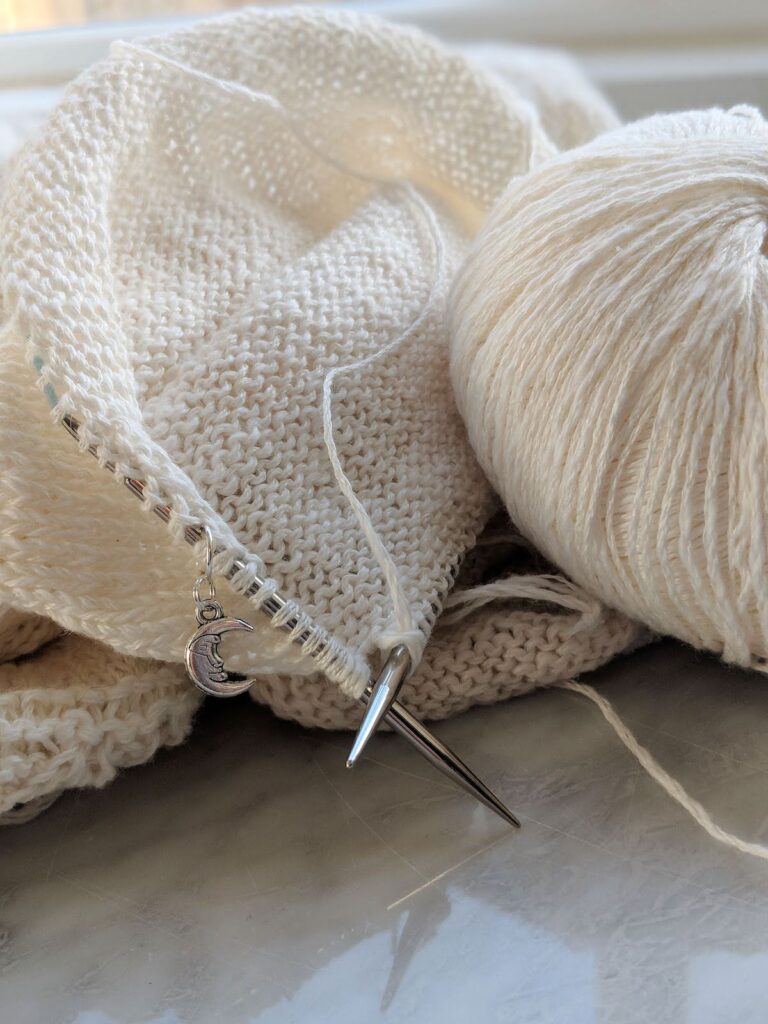
8. Use circular needles to distribute the weight of heavy projects.
Most learn-to-knit kits come with a couple balls of yarn and a set of straight needles. Knitters on tv usually use straight needles, too, so a lot of new knitters think these are the most common and most useful way to knit.
But for heavy projects like garments and blankets, a circular needle with a long cable will be better for your ergonomically. You can knit flat on a circular needle, so you don’t have to worry about having to adjust the pattern you’re following.
Once you are comfortable enough as a knitter to know which needle tip shape and material you like, you can even invest in a set of interchangeable needles. I have some Addi Turbos that have been my treasures for 13 years now.
9. Stitch markers can help keep you from getting lost.
Stitch markers serve so many useful purposes. For one thing, they’re great for knowing when one round starts and the next begins so you know when to work which round of your pattern.
But they’re also helpful for knitting lace and for casting on large numbers of stitches. In both of these scenarios, if you place a stitch marker at consistent intervals (say, every three repeats of the lace or every 20 stitches of your cast-on), you’ll easily be able to see if your stitch count is off.
10. Know when you’re too tired to keep knitting.
I love knitting at night after the house is quiet, but sometimes, I’m just too dang tired. When you’re tired, you’re more likely to make mistakes or have uneven tension, and that means you’re more likely to have to rip back your work in the morning.
Now, I know I just said up above that time spent knitting is never wasted, but there’s a limit to even my patience. For that reason, I have a rule that if I make three significant mistakes within one episode of tv, it’s time to set aside the project and either pick up a vanilla sock or go to bed (because sometimes I’m tired but it’s too early to sleep).
If you don’t want to knit for three hours only to have to rip it all out again the next day, keep an eye on how tired you are.
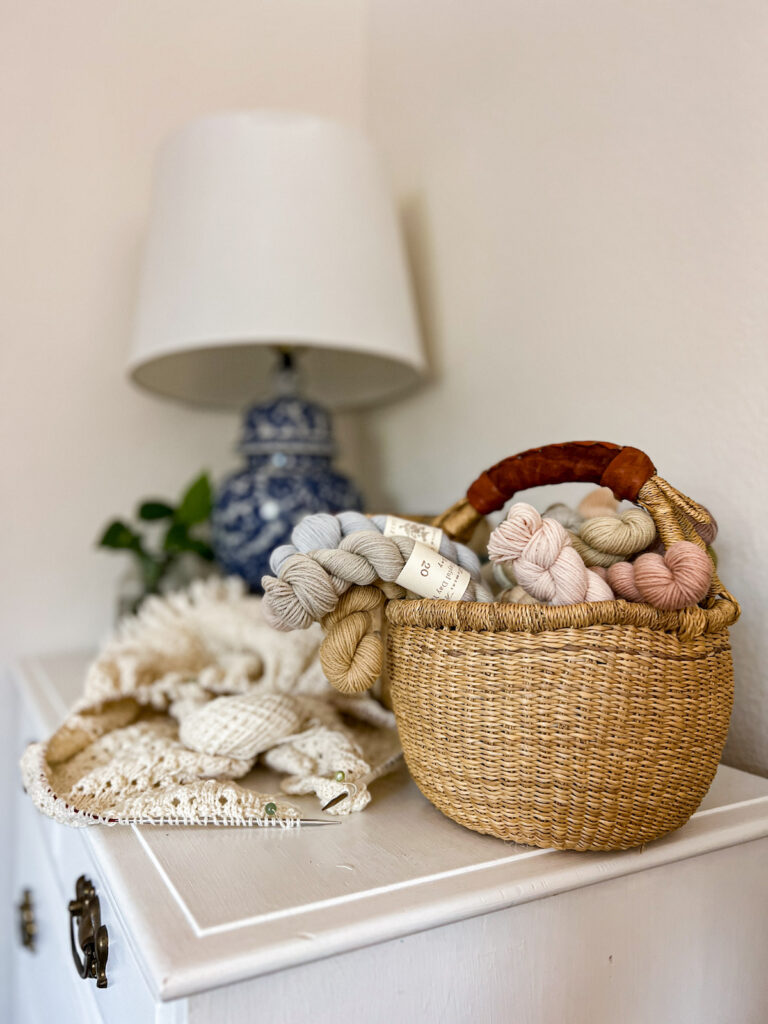
11. There’s always something more to learn.
Even the most experienced knitters know that there are always new things they can learn. For example, I’ve been knitting for 17 years and design patterns professionally and write extensively about knitting here on my blog, and yet, I’ve never quite gotten the hang of the magic loop method.
Maybe this year’s the year I’ll finally get it.
Whether it’s colorwork or new lace techniques or brioche or intarsia or or or, there’s always a new technique or skill to tackle. Think you’ve learned every skill there is? Cool, then you can try learning to knit those same skills in different ways (English style knitting, continental style, combination style, Portuguese style, Shetland style, you get the picture).
Let’s stay connected!
Join my newsletter for 30% off all new releases, regular updates with helpful tips and tricks, first crack at registration for upcoming workshops, exclusive discounts, and more.
Join the A Bee In The Bonnet Facebook Group to participate in knitalongs and other fun community events
Come hang out with me on the A Bee In The Bonnet TikTok
Follow along on the A Bee In The Bonnet Instagram
Get inspired via the A Bee In The Bonnet Pinterest

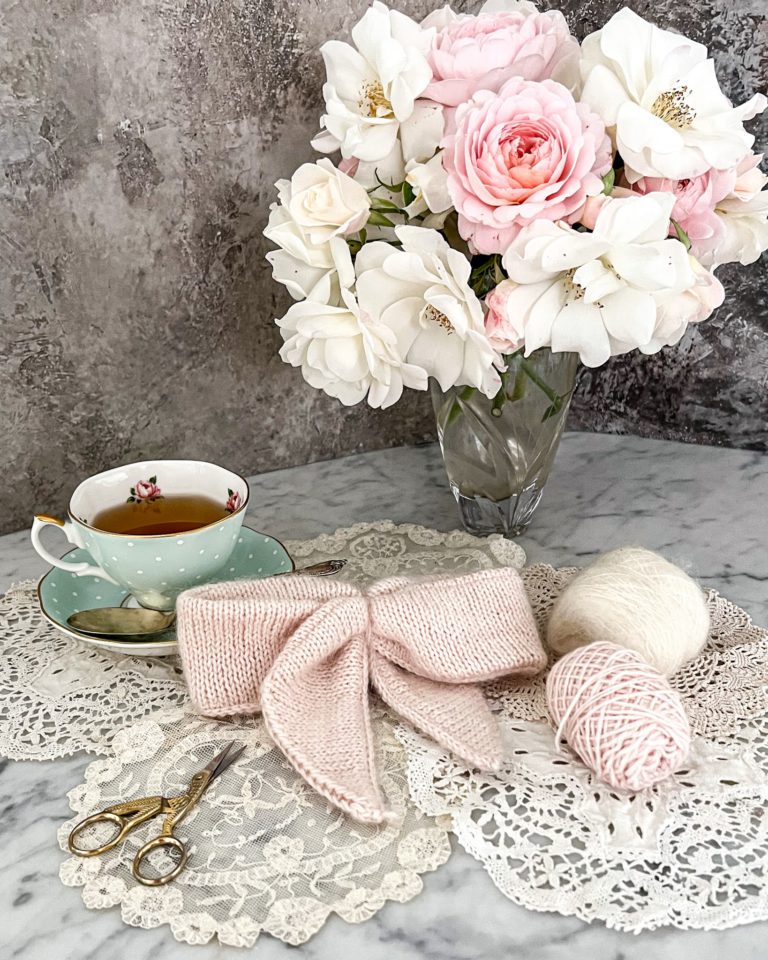
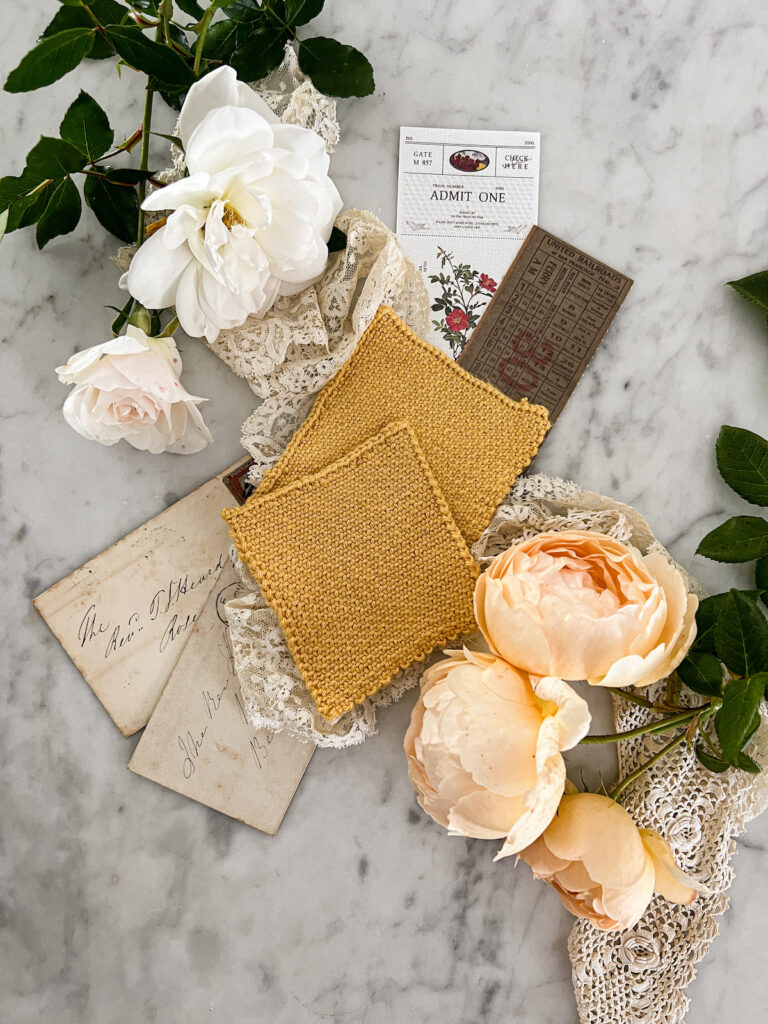
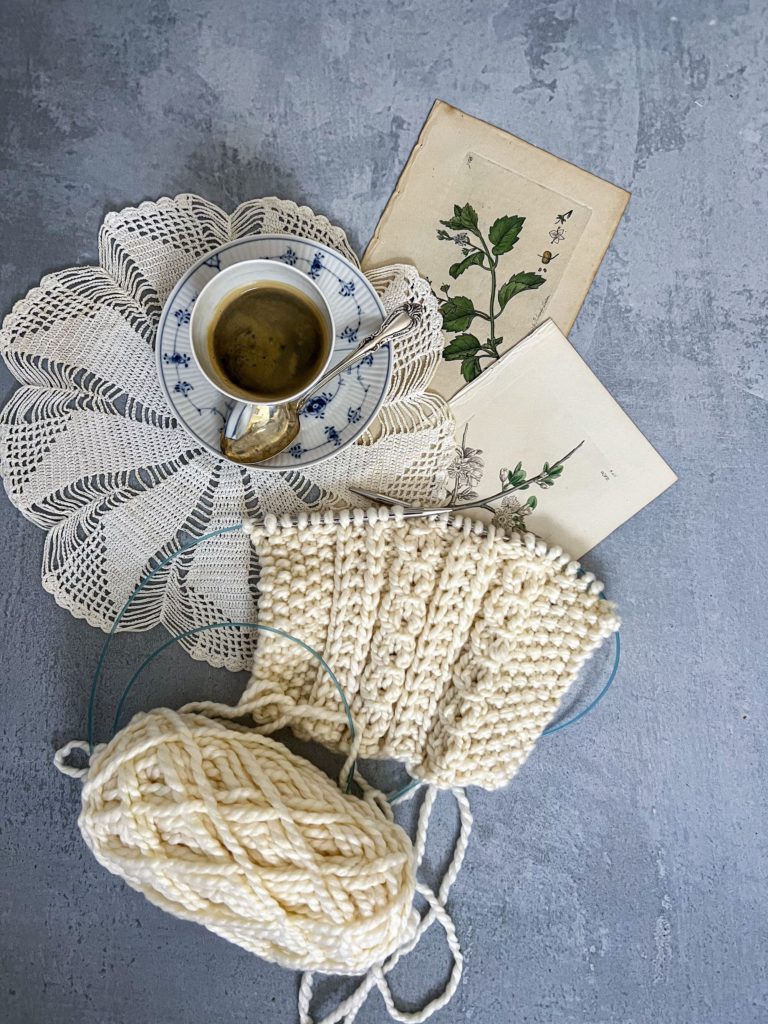
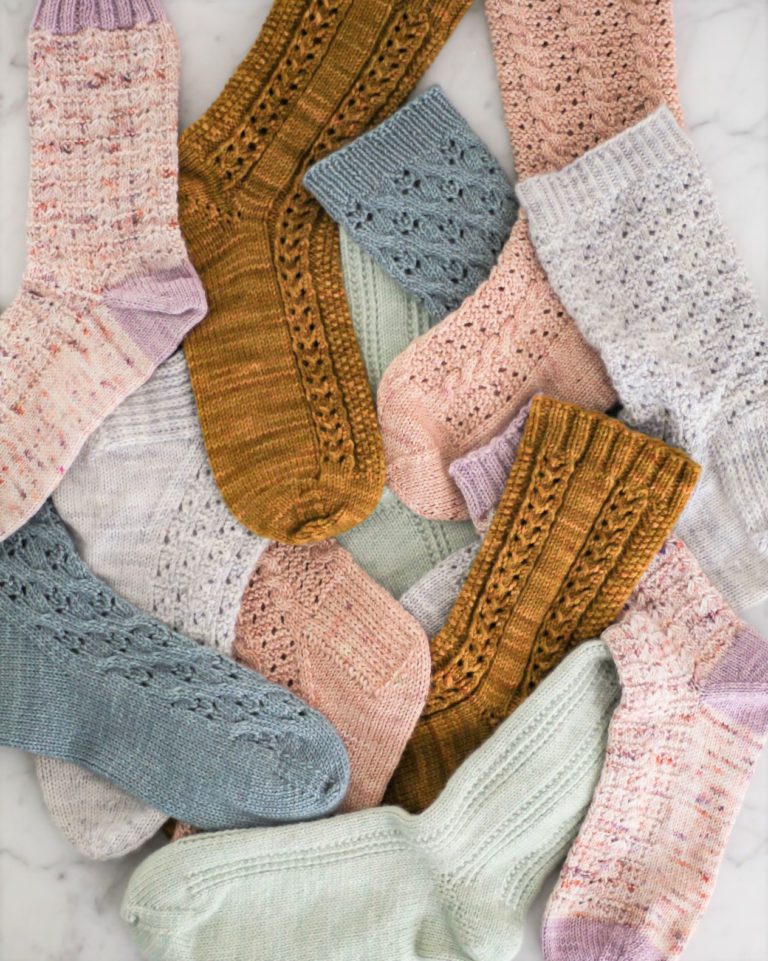
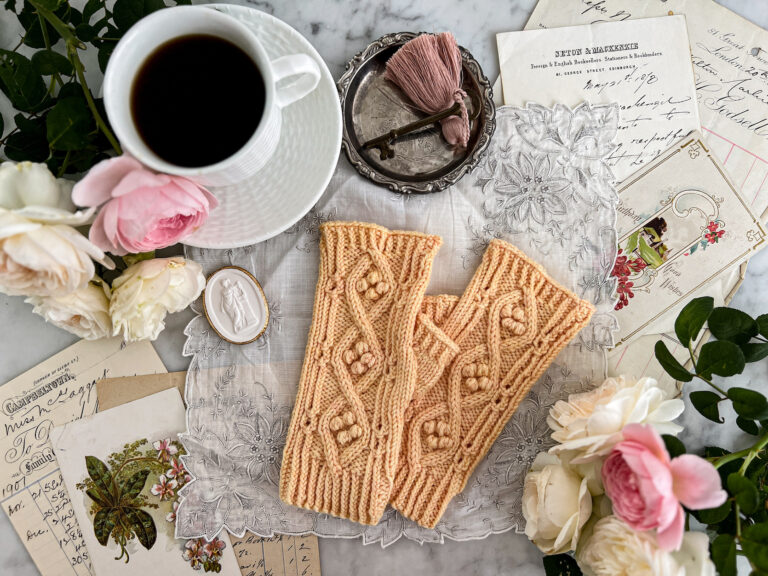
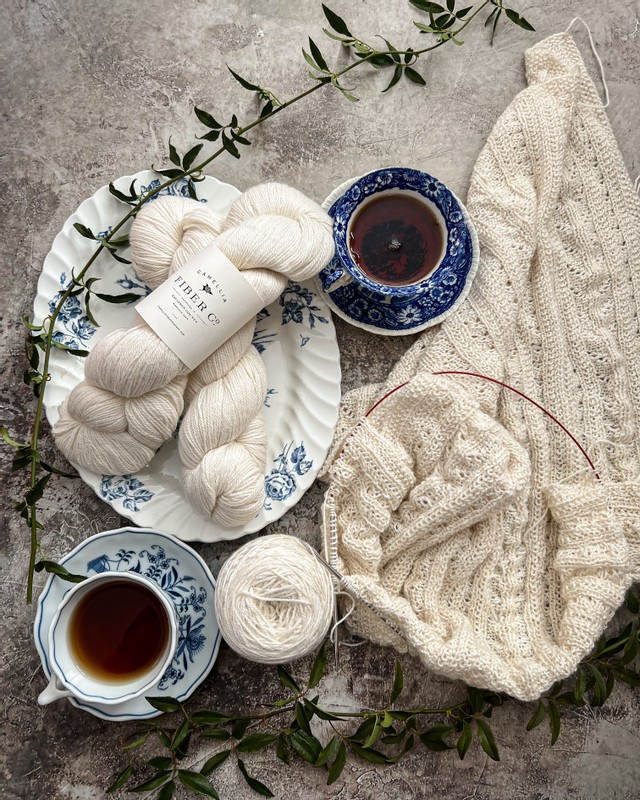
Thank you for this lovely post. I have been knitting for many, many years and you summed it up beautiful here with a knitter’s experience. Look forward to your next one.
Thanks for the kind comment! I’m so glad you enjoyed the post.
This should be required reading for every new knitter! Great job.
Oh, thank you! I do hope newer knitters find it and get some use out of it.
I have just recently figured out number 10. Often I would set a goal for a certain amount to accomplish, only to find mistakes the next morning. I now find it best to do a self check and decide whether to continue or go to sleep. (I also never knit when I first wake up…the brain needs a little time to warm up hahaha).
It takes some wisdom and experience to know when we’re just not in the right head space for knitting, and even after all these years, I still get it wrong sometimes! I ripped out the start of a new sweater twice over the last few days because I kept making silly mistakes.
Cheers!
From one former lawyer turned fiber arts enthusiast to another!
I love how many of us there are in the fiber world! Glad to have you here.
Another benefit of using circular needles is that, if you find yourself knitting in close quarters (like on the bus or at a popular s&b), you’re not going to poke your neighbors with a needle. An elbow, maybe, but your needle choice can’t help that. 😺
This is an excellent point (no pun intended!).
@Lauren Rad, 😂
@Lauren Rad, come on, if you notice it before posting it’s intended. Own it. Love you and love that you’ve still got your first scarf xo
I’m honestly amazed by how well this thing has held up, considering I didn’t know I was supposed to weave in my ends and just snipped them as close to the knot as I could!
I’m 74, I was taught to knit when I was 6 by a male truck driving friend of my family. I have knitted extensively over the years and have recently picked up my needles again and have knitted three throw rugs in a row using sock yarn. I find knitting is a wonderful way of relaxing the mind, also it will keep my brain exercised. Keep up the knitting and help wonderful small businesses who sell quality wool survive.
What a neat trajectory you’ve been on! I’m so glad the stitches have kept you company.
Super – so much more fun than law!
Lovely article.
Yes! Magic loop remains conundrum. But shoulder injury made me learn picking and trying for reverse knitting next (knitting purl “wrong” side from right side . . !
❤️
Definitely having more fun now than I did in my previous career! And I get to meet so many lovely people doing this work. What a joy it is.
I’m 74 and knitted my first jersey that had a zigzag pattern up the jersey, when I was 13. I was sick in bed at that time and my mother gave me this to keep me occupied. I’ve never looked back and am still knitting. I knit a lot of blankets mostly for charity and jerseys for my niece and great niece and nephew’s. Knitting is a great relaxation. Thank you for this great article
This comment gave me such a big smile. Thanks for sharing your knitting journey with us!
Hi! I am from India and have read your lovely post and I appreciate the tips you have given, I too have been knitting for many years but still make the mistakes that you have mentioned I have tried knitting with various yarns except for acrylic varigated yarn. I have purchased a couple of balls of this yarn but I cannot find a good pattern for it,tried knitting in stocking net stitch but I don’t like the way it has turned out could you please suggest something I could knit with it. Thanks Assunta.
It’s funny how even years of experience can’t always keep us from getting in our own way, isn’t it? For the acrylic variegated yarn, you might find that going up or down a needle size might help with how it knits up. That’s always my first step if I don’t like how a yarn looks when I’m using it.
The Russian method of joining wool is better than the magic circle as you have no yarn tails to sew in or a knot .
you use a wool needle to join the woolis a bit fiddly at first but I like the result better as I crochet more than knit but my knitting is usually for stuffed animals and dolls.
Really appreciate and enjoyed the article and have also learnt a lot of things I didn’t know or do thank you x
Oh, I actually haven’t used magic circle, but will have to give it a try to see which joining method I prefer. Magic loop is a technique for knitting in the round that involves using one very long circular needle and wrapping the cable through your work.
@Lauren Rad, haven’t needed to do that but probably because I bypass patterns with that method or dpns. I do use magic loop for crochet.
Also love frog stitch on all methods, including Swedish weaving and crewel and Tunisian crochet.
Wish my ambidextrous translated to entrelac.
Thanks for your thoughtful post, you say exactly the things where I have gone astray…wrong weight wool, mistakes galore! My first knitting project was a Fairisle patterned slip jumper in plain and perle, I thought how hard can that be? Took me over a year and by then it put me off knitting! Reading your post makes me want to re-start knitting – but something simpler?! 😂
Oh my goodness, yes, that’s a really intense first project! I like to start with small squares that can be used as dish cloths or sewn together into scarves, bags, cushion covers, etc.
@Carmel Fletcher, doing the hard stuff first makes all new things easier.
This is a lovely article and from one former lawyer gone yarn dyer/LYS owner, well done!
Part of me is starting to suspect we should start a “former lawyers in the fiber industry” support group! There sure are quite a few of us.
Number 10 !!
Thank you for the useful information. I am 71 and just recently started to knit again for my great-great grandchild. So there are a lot of things already forgotten. Greetings from South Africa
A great-great grandchild! What a wonderful treasure. I hope you get to make them many cozy things in the years to come.
You are never too old to learn,there is always something you can achieve. I am an older lady and have done much knitting over the years,but recently I found out how to do finger knitting. This was my first with this and was amazed how it came together. There are so many things you can create with it. Awesome!8
How neat! Learning new skills is also great for our self-confidence and helps us adapt to a changing world. After all, if we can learn one thing, surely we can learn others, right?
Geat post!! Don’t knit when you’re tired and don’t try to spin a cake of yarn on your swift… what a disaster I had and up an extra 2 hours getting it caked right!!
Oh no, your poor yarn and poor you! That sounds like such a frustrating experience.
Very good article. I’ve been knitting for more than 60 years and you’re right, you’re never too old to learn. I also learned the hard way not to knit late into the night to get something finished! Mind my late nights are now much earlier than they used to be!
I absolutely love hearing from knitters who have decades of experience and are still learning new things. What a joy it is to keep growing and exploring. Thanks for the comment!
I especially like the last one. I just did a MKAL with Romi Hill, and she used a number of interesting stitches and techniques I wasn’t aware of.
As for me, I have two knitting rules:
1. Don’t panic! What looks like a mistake (even a huge mistake) might not be one at all. Turn your work around, count stitches, put it down & come back to it later. If there is a mistake, it is fixable in some way. Deep breath; you’ve got this.
2. Read the pattern. Really read the pattern. Don’t assume you know what it says. Now read it again. (With 45 years of knitting experience, I break this rule a lot, to my detriment, most of the time!)
Oh, I love both of those rules! They can go a long way toward making knitting a more relaxed experience.
Great info! I, too, was like you not sure about the magic loop method. I have been knitting now for about 15 years plus and always used double pointed needles. But I decided to try this and made socks for 1 of my grandsons. I was amazed that it was so easy to do and now love it. It’s so cool to finish both socks at the same time. Try it, you too might like it.
I always use circulars now. It’s easy to drop a needle when a passenger in a car and my husband wouldn’t stop to let me find it.
I come from a long line of knitters, my Grandmother was bedridden in the 50’s at a youngish age and she would knit and tell us stories while we layed on Grandpa’s bed. My Mom was in nursing and when she worked night shift she would knit gifts when things were quiet in the night. I remember when I was about 6, rushing to Mom before she left for an event they were going to, dressed in her party dress, to get her to cast on 20 stitches for me for the scarf I was making for my doll. I am now 69 and have done weaving, spinning, quilting but still find knitting and crocheting a generational cathartic activity. It’s amazing to me now that you can choose just about any pattern and find instructions for new to me directions online. Your points are so bang on. We are an intrepid bunch us fibre people. Thanks so much!
I have been knitting g for about 65 years. You gave really good advice. Ont of the best was finding a way to ease stress. Keep knitting and encourage others, they will thank you
I’d add learning to include a lifeline, especially for lace knitting. Before I discovered that technique undoing a mistake was very time consuming.
Wonderful tips. You said it all. Thank you. Knitting is therapy when you don’t make mistakes. Knitting is a journey.
Thanks so much for this post! It really makes me feel hopeful that I can work on learning more!
Not often I read this type of post but I’ve thoroughly enjoy thus one. Think I might attempt a lace pattern 🤔
Right, right, and right! Will send your URL to new friend who is new at knitting.
Took me 40 years to try entrelac. Then found the process to be soooo easy! Same with BSJ by Elizabeth Zimmermann.
Some other hints.
1. You can crochet your garments together. (Makes it easier to unravel).
2. Knit childrens garments from the shoulder down (Makes it easier to add length). Always knit longer in body to last longer.
4. Cast on & off with 1 needle size bigger. I.e. 8ply bands ask 3.25mm, I use 3.5mm for cast on & 1st row.
5. Some people also knit the first row after cast on.
6. If using garter stitch for bands always end with odd side row. Better looking.
7. Have a basic / classic book of knitting pattterns (Patons Classic is ideal for, babies, children, women & men. That way you can make you own patterns, stripes etc.
8. Always finished yarn ball at the end.
9. If using multiple colours darn in ends as you go.
10. Be aware patterns can have mistakes.
11. If knitting left handed be mindful of cardigan fronts for making the buttonholes.
12. If the cardigan pattern has a sew on band & vertical pattern, add the bands stitches to the bands & leave on safety pin, when starting the body.
13. Always use a flat seam for rib bands / ribs & baby items. (have a long tail when casting on.
14. Use a “spacer” when sewing on buttons. Sew an extra button inside the garment.
15. Knitted garments as gifts are great especially socks (I gave all my 4 adults children, wool socks for Xmas once).Also make gifts for baby showers etc.
16. Always photo your finished garmennt, document /date in a notebook. I have been knitting a boys slashneck fishermans rib jumper, from a magazine pattern since 1982 & made ten garments.
17. Do not write on original pattetns, make a photocopy or use a notebook.
18. Never share original pattern, make a photocopy (you can lose irreplaceable patterns.
19. Place magazine patterns in a plastic sleeve.
20. Enjoy knitting, help other knitters to learn, share (copied patterns), join a knitting circle. Donate remants to others, for craft or “joseph” items.
What a fun “find” you are! Scrolling along yesterday, I found your site. I’ve now returned this morning to read thru your 11 steps to guide us from making mistakes. I bet most of us, found ourselves in that list! I am 75, still in love with all aspects of knitting, fiber and searching gor the perfect pattern. I taught myself to knit at age 14. Now, as you wrote, continuing to learn new techniques, challenging ourselves with each new project, seems to be the key! Learning Evan yhe smallest new thing, increases our love for this craft. I love your “skills snowball”. Happy knitting and THANKS
Thanks so much for your kind note! I’m glad you’re here and hope the blog posts continue to bring you joy.
I also have been knitting for a very long time, and still have my favorite needles! I also have some old instruction books that I love to g o through sometimes. Gives one a chance to dream! Thanks for bringing back emories!